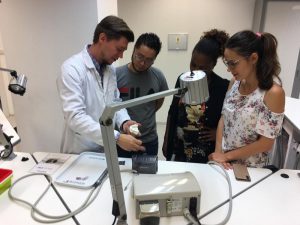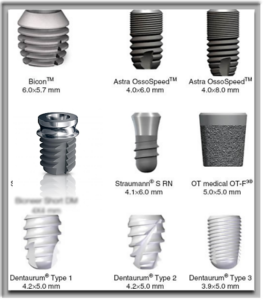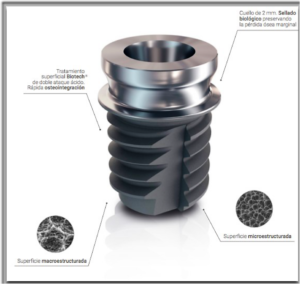Short and narrow implants or How to place implants without bone regeneration

Written by Dr. Rodion Bushin, DDs, PgDip, Msc Professor of the University Master of Implantology, Bone and Tissue Regeneration and Prosthesis at the University of Murcia UCAM
Dental Implantology is a fairly modern discipline, but it already plays an important role in Dentistry. Each year its possibilities for dentition restoration are expanded: the current Implantology is simpler and has higher quality, lower morbidity for the patient and greater ease of use for the dentist; In addition, it no longer involves so many complications, as before.
Today we will talk about short and narrow dental implants that allow replacing lost teeth without the need for a bone graft (vertical and horizontal bone augmentation of the atrophic alveolar ridge with synthetic or autologous bone, with titanium, synthetic or collagen membranes).
Currently, there are several scientific studies that evaluate the clinical results of the use of narrow (less than 3.5 mm in diameter) and short (less than 8 mm in length) implants, which suggest that narrow implant survival rates They are similar compared to regular diameter implants and that is a completely reliable therapeutic option.
In addition, the placement of short and narrow dental implants is a more economical operation, because it gives the possibility of avoiding expensive bone augmentation procedures.
Then, we will know a little more about the subject: what are narrow and short dental implants, what are the indications for placement and what are their advantages compared to the use of regular size implants.
Narrow implants
When horizontal space is limited, a narrow implant (less than 3.5 mm in diameter) may be the only possible option to replace a lost tooth.
Indications for placing a narrow implant:
- Lack of bone width V-L (<6 mm).
- Reduced mesiodistal space.
Advantages of narrow implants, confirmed by scientific studies:
- They give the possibility of reducing or avoiding the number of invasive procedures and techniques.
- Medium and long term use is well documented and has a high survival rate.
- It is a predictable treatment.
- The operation is less painful.
- It is cheaper than installing standard implants, since bone augmentation is not needed.
The ITI Group 2014 Consensus (International Team for Implantology):
- Narrow implants work.
- They have the same success rates as conventional IOIs.
- They have enormous advantages: the surgery is less invasive and needs less bone augmentation.
- More bone is preserved (bone envelope) and bone resorption is avoided.
- They can be first choice.
Short implants
The placement of short dental implants (less than 8 mm in length) is one of the very good solutions for the restoration of dentition in many complicated clinical cases, especially when the vertical height of the bone is limited and there is a shortage of bone tissue. It is an alternative to bone regeneration that has passed the test of time and is already scientifically proven.
The concept of short implants has been changing over the years. 20 years ago it was considered as one who measured less than 12mm. Some determine that this length should be less than 8 mm. Finally, other authors consider that the length should be 6 mm or less. And now there are mini-implants that are only 4mm long.
Indications for the placement of short implants:
- Later sectors with bone deficit;
- Different types of bone resorption;
- Contraindications for breast lift (acute sinusitis, cysts, tumors);
- Proximity of the inferior alveolar nerve.
Advantages of short implants, confirmed by scientific studies:
- The greatest advantage of the placement of short implants is the scientifically proven possibility of avoiding very expensive and painful bone augmentation procedures, which also have many contraindications.
- Surgical time and treatment costs are also in favor of short dental implants.
The generalized results of several scientific studies on the efficacy and survival of short implants performed in the last 20 years:
- The main conclusion: the studies made revealed that there is no significant difference in survival between implants smaller than 8 mm, 8 mm and implants of regular length (equal to or greater than 10 mm).
- Treatment with short rough surface implants is no less effective compared to conventional implant placement.
- The treatment with short implants is faster, cheaper and is associated with a lower morbidity.
- Short implants are a predictable option and with a favorable therapeutic prognosis.
- The accumulated survival rates at 20 years of short and standard implants were 92.3 and 95.9%, respectively.
It should be noted that the placement of short and narrow dental implants is not performed in any dental clinic, because the ability to perform both procedures is currently limited to experienced surgeons. In addition, not all clinics are adequately equipped to perform this type of operations, for example, it is essential to have the Dental Tomography team to perform a detailed and thorough examination before deciding which implantation technique is appropriate in your particular case.
If you need to restore the absence of a tooth, we will be happy to help you. In our clinic you will receive expert help from high-level implantologists and other specialists: in the first consultation they will examine your case, they will do a CT scan, our doctors will describe the possible treatment methods and develop a detailed and personalized plan to return your smile !
Your Implantologist in Torrevieja and Campoamor,
Rodion Bushin, DDs, PgDip, Msc
Professor of the University Master of Implantology, Bone and Tissue Regeneration and Prosthesis at the University of Murcia UCAM




